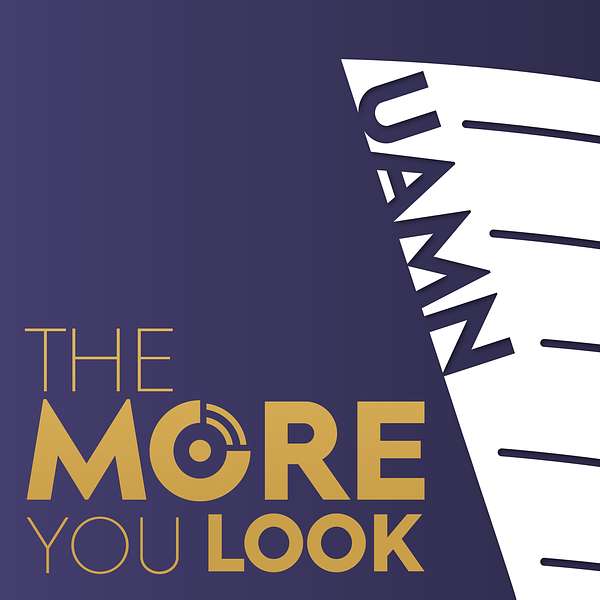
The More You Look
Welcome to The More You Look, a production of the UA Museum of the North and your behind-the-scenes journey into museum collections, research, exhibits, and public programming from Fairbanks Alaska. Join us as we talk about special exhibitions in development, and changes to look for in the permanent galleries. Not just the what, but the how and why. Learn about new programs and new ways to get involved. Curators will discuss the latest field season and collections managers what new finds have come to our labs to be cataloged, studied, and made available to researchers worldwide. We’ll get a look at major projects on the horizon and notable ones from years past. We’ll visit the museum labs–and field camps throughout Alaska and gain a better understanding of not only what this museum is within and without its walls, but quite possibly what discussions take place within any art and natural and cultural history museum that you might venture inside.
The More You Look is now also a KUAC FM radio show.
The More You Look
Birds of the Late Cretaceous
Arctic lands today are important breeding grounds for more than 200 species of birds, some of which migrate great distances to take advantage of the abundant summer resources. But this episode is not about them, but birds that lived in Alaska a long-long time ago.
The Prince Creek formation of northern Alaska is the northernmost fossil-bearing Late Cretaceous ecosystem in the world. It possesses a remarkable collection of fossils, including dinosaurs, mammals, fishes, and birds.
UAMN Curator of Earth Sciences, Patrick Druckenmiller and graduated UAF Masters student in Geosciences, Lauren Wilson join me to talk about Lauren’s research into these newfound 70-million-year-old nestling bird fossils. It’s novel research and the quick beginnings of a bright career.
The More You Look is a production of the UA Museum of the North, on the campus of the University of Alaska Fairbanks and the ancestral lands of the Dena people of the lower Tanana River. UAMN illuminates the natural history and cultural heritage of Alaska and the North through collections, research, education, and partnerships, and by creating a singular museum experience that honors diverse knowledge and respect for the land and its peoples.
